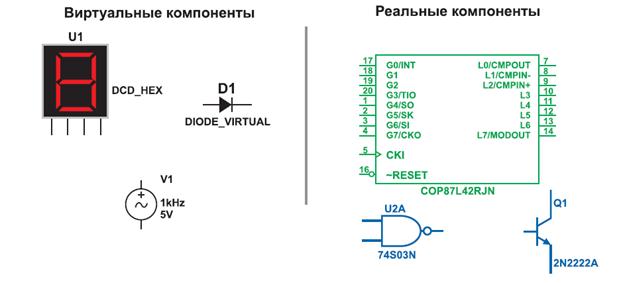Classification of sentences: structural, semantic, communicative
The three aspects (structural, semantic, functional) lay the foundation for sentence classifications, based correspondingly on sentence structure, sentence meaning and purpose of communication. As a formally organized unit, the sentence possesses structure, which is understood to be a constructive integration of words (noun groups, verb groups, adjective groups, adverb groups) occupying certain syntactic positions (of subject, predicate, object, attribute, adverbial modifier) connected syntagmatically with syntactic relations (predicative, subordinate and coordinate). According to their structure, sentences are classified as follows: · simple, with only one predicative line expressed by subject and predicate, and composite, with two or more predicative lines, namely, complex, semi-complex, compound, semi-compound: e.g. I was curious, though it wasn’t any of my business. If you continue in this way you will break her heart. You can’t expect all people to take your words for granted. I really don’t think of him being rude to his elders. Either he had recovered from panic, or he pretended to have. I turned the handle, and the door opened. Their conversation was unpleasant but rather instructing. They can, and do get their supplies from the outside; · complete, having full predication in the position of subject and predicate, and incomplete or elliptical, where missing parts are easily understood from the context: e.g. I bet you completely forgot it. – Not completely. He is not afraid of thinking! And of acting? Do you want to? – Extraordinarily; · two-member, where both the subject and the predicate are explicitly expressed in the outer structure, and one-member, with only one part being explicitly expressed, the other one – missing, included are the following: nounal (e.g. Who will meet us? – Mary. Silence! No wind), adjectival (e.g. What is your opinion? – Hard and ruthless. So kind of you!), verbal (e.g. Sit down! Do take a seat! Why not tell him?), modal words (e.g. Certainly! Alright! Of course), greeting, introduction formulas, incentives, excuses, etc. (e.g. Good morning! Thank you. Sorry!); · extended, having some other parts besides subject and predicate, or unextended, with the only positions of subject and predicate. Simple two-member sentences are exposed to the syntactic process of extension through complementation of the positions of object, attribute and adverbial modifier (e.g. A film is on. An interesting film is currently on at the cinemanearby my home) and the syntactic process of expansion through enlargement of the component parts with the paratactic contaminations of homogeneous parts of the sentence or accumulative parts spread in attributive groups: e.g. The woman turned round the corner, crossed the street and walked into the door. Fields, woods were in deep snow. He bought an expensive fast American car. She looked stunningly beautiful in her embroidered hugging black evening dress. Content or semantics of a sentence tends to be considered as semantic structure integrated of lexico-grammatical meanings of its constituents by the rules of their combinality based on colligation (grammatical valency) and collocation (lexical valency). Commonly, a definite syntactic pattern corresponds to a semantic structure which leads to the semantic classification of the sentence done on the basis of the meaning conveyed by the subject and on the basis of the meaning conveyed by the predicate. In accordance with the first factor, sentences are divided into the groups: · Personal human (definite or indefinite): e.g. Someone has stolen his bike. Everybody felt happy. She works in a bank. Nobody will give me a hand; · Personal non-human (animate or inanimate): e.g. Winter has come. The river flows into the sea; · Impersonal factual: e.g. It is snowing heavily. It is fine. It was getting dark; · Impersonal perceptional: e.g. It seems interesting. It tastes awful. Reflecting the semantics of the predicate, sentences fall into such types: · Actional indicating physically developed processes: e.g. He is doing well at school. They get to school by car; · Statal indicating the state of the process: e.g. I respect intelligent people. He did not sleep well at night; · Relational indicating social or personal relationships between people: e.g. He is her brother. They report directly to the supervising manager. Created by the speaker in the course of communication out of units of language, words in particular, a contextually bound sentence is made up, playing the function of a complete unit of speech, intonationally delimited and aimed at a certain purpose of communication. Being a communicative unit, a sentence distinguishes four kinds of sentence according to the purpose of the utterance: · Declarative statements which state facts in affirmative or negative form: e.g. You can’t rely on him. He came up and greeted me. · Interrogative sentences of such types of questions as general, special, alternative and disjunctive: e.g. Shall I start from the very beginning? Where do you come from? Have you got a job or do you study? He’s away, isn’t he? · Imperative orders, commands, advice, request, which serve to induce a person to do sth: e.g. Don’t touch it. Look out. You try and do it. · Exclamatory sentences expressing various emotions: e.g. What a lovely day! How wonderful. How fast you are driving. Key words: predication предикация\предикативность simple sentence простое предложение composite sentence сложно-составное предложение syntactic speech unit синтаксическая единица речи structural aspect структурный аспект semantic aspect семантический аспект functional aspect функциональный аспект immediate integral unit of speech структурно целостная смысловая единица речи syntactic pattern синтаксическая модель meaning значение contextually relevant communicate purpose контекстуально обусловленная коммуникативная целеустановка language unit языковая единица syntactic unit синтаксическая единица communicative unit of speech коммуникативная единица речи subject-predicate structure субъектно-предикатная структура proposition пропозиция constituents of sentence конституенты предложения time correlation of act of speech with the event временная соотнесенность речевого акта с событием predicative utterance предикативное высказывание referent референт situational event ситуативное событие double headed predication предикация с двойным центром two-member sentence двусоставное предложение single headed predication предикация с единичным центром one-member sentence односоставное предложение explicit predication эксплицитная предикативность predicative line предикативная линия implicit predication имплицитная предикативность quasi-sentences \ one-word sentences квази-предложения\предложение-слово sentence structure структура предложения sentence meaning значение предложения purpose of communication коммуникативная установка constructive integration of words структурная сочетаемость слов noun group группа существительного verb groups группа глагола adjective group группа прилагательного adverb group группа наречия syntactic positions: subject, predicate, object, attribute, adverbial modifier синтаксические позиции: подлежащее, сказуемое, объект\дополнение, атрибут\определение,обстоятельство syntactic relations: predicative, subordinate and coordinate синтаксические отношения: предикативные, подчинительные, сочинительные simple sentence простое предложение composite sentence сложно-составное предложение complex sentence сложноподчиненное предложение semi-complex sentence предложение усложненной структуры с подчинением compound sentence сложносочиненное предложение semi-compound senternce предложение усложненной структуры с сочинением complete sentence полное предложение incomplete\elliptical sentence неполное предложение\эллиптичное two-member sentence двусоставное предложение one-member sentence: nounal, adjectival, modal words, greeting, introduction formulas, incentives, excuses односоставное предложение:предложение-существительное\прилагательное\модальное слово\приветствие\знакомство\побуждение\извинение extended sentence распространенное предложение unextended sentence нераспространенное предложение syntactic process of extension синтаксический процесс распространения syntactic process of expansion синтаксический процесс расширения paratactic contaminations сочетания с совмещением на основе синтаксической однородности homogeneous parts of sentence однородные члены предложения accumulative parts члены предложения с аккумулятивной связью content \ semantics of sentence содержание\семантика предложения semantic structure семантическая структура lexico-grammatical meanings of constituents лексико-грамматические значения конституентов colligation\grammatical valency коллигация\грамматическая валентность collocation\lexical valency коллокация лексическая валентность Personal human\definite or indefinite личные предложения (определенно-личные\неопределенно-личные) Personal non-human\animate or inanimate личные предложения (с одушевленным\неодушевленным предметом) Impersonal factual безличные фактуальные предложения Impersonal perceptional безличные перцептивные предложения Actional акциональные Statal статальные Relational реляционные Declarative statements повествовательные предложения Interrogative sentences вопросительные предложения Imperative повелительные предложения Exclamatory восклицательные предложения
|




